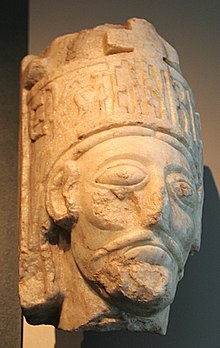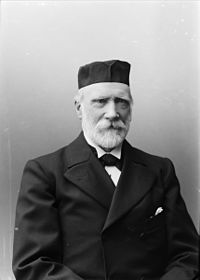|
Nicolay Nicolaysen
Nicolay Nicolaysen (14 January 1817 - 22 January 1911) was a Norwegian archaeologist and Norway's first state employed antiquarian. He is perhaps best known for his excavations of the ship burial at Gokstad in 1880. [1] Biography Bergen Museum Nicolay Nicolaysen was born in Bergen to merchant and bank administrator Lyder Wentzel Nicolaysen (1794–1876) and Sophia Susanna Siewers (1797–1826). He was the half-brother of professor of medicine Julius Nicolaysen (1831–1909). Nicolaysen graduated from the University of Christiania now (University of Oslo) and became cand.jur. in 1841. In 1845 he was employed as a copyist in the Ministry of Audit and in 1858 an assistant at the National Archives (Riksarkivet). [1][2][3] In 1851, Nicolay Nicolaysen was a founding member of the Society for the Preservation of Ancient Norwegian Monuments, of which he was president from 1851 to 1899. He also took active part in the restoration of the Nidaros Cathedral in Trondheim and of the Hall of Haakon IV (Håkonshallen) in Bergen. He was active in the founding the National Museum of Art, Architecture and Design (Nasjonalmuseet for kunst, arkitektur og design) and was a proponent of the Norwegian National Academy of Craft and Art Industry.[4][5] In 1852, Nicolaysen led the first investigations at the Borre mound cemetery (Borrehaugene) at Horten, Vestfold. The excavations uncovered an extensive selection of craft work of a stylistic form which has subsequently become known as the Borre style. Many of the artefacts recovered during these excavations are presently on display at the Viking Ship Museum in Oslo.[1][6] Nicolaysen also carried out excavations of Munkeliv Abbey located at Nordnes in Bergen in 1857 and 1860. Here, well-crafted structural fragments were recovered. These can be found on display in the Museum of Cultural History (Kulturhistorisk Museum), part of Bergen Museum, and include a marble head of 12th-century Norwegian monarch Øystein Magnusson. [7] [8] The first excavations of the Kaupang area were undertaken in 1867. Nicolaysen mapped one of the mound cemeteries around the former town, and he excavated 79 burial mounds. He did not, however, investigate the urban settlement associated with the cemeteries. Later excavations indicate that Kaupang was one of the first urban settlements of some significance in Norway.[4] [9] Nicolay Nicolaysen is perhaps most famous for excavating the Gokstad ship burial (Gokstadfunnet) at Gokstad farm in Sandar, Sandefjord, Vestfold in 1880. Currently the Gokstad ship (Gokstadskipet), together with a burial chamber, two small boats and two tent boards from the burial chamber are displayed in the Viking Ship Museum in Oslo.[4] [10] [11] Personal lifeIn 1861, he married Anne Thue Christie (1831–1928). They were the parents of physician Lyder Wentzel Christie Nicolaysen (1866–1927). Nicolay Nicolaysen died during 1911 at Kristiania (now Oslo), Norway. [12] Selected works
References
Other sources
External links |
||||||||||||||||
